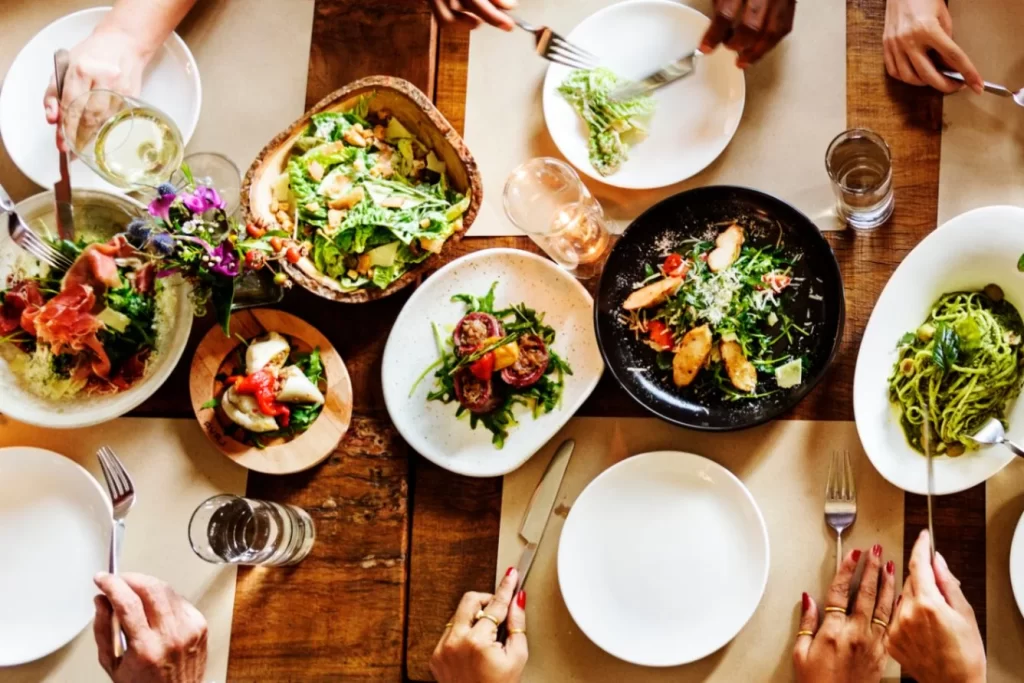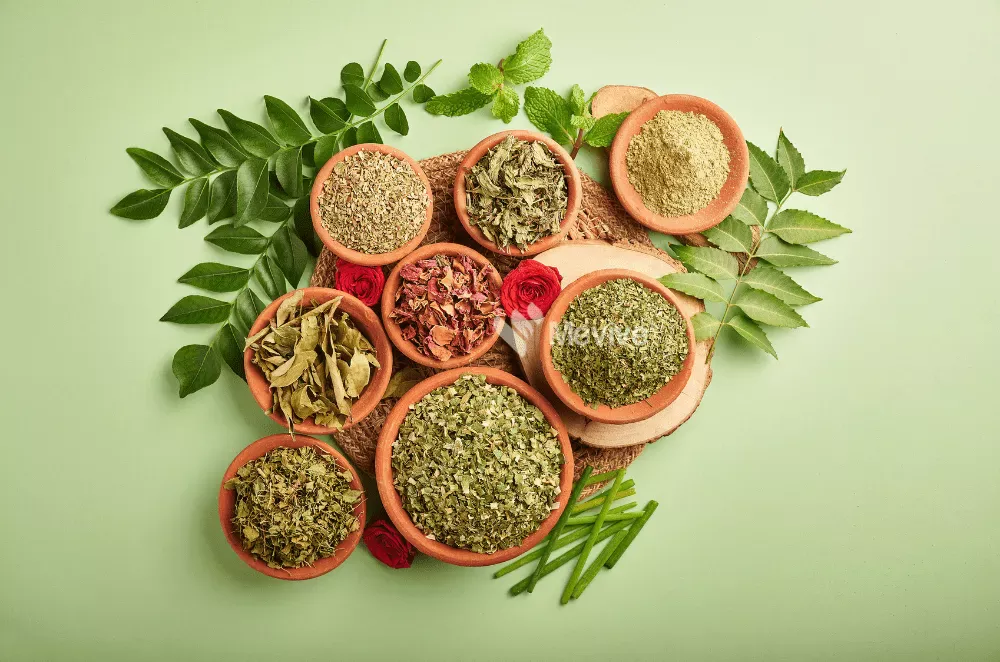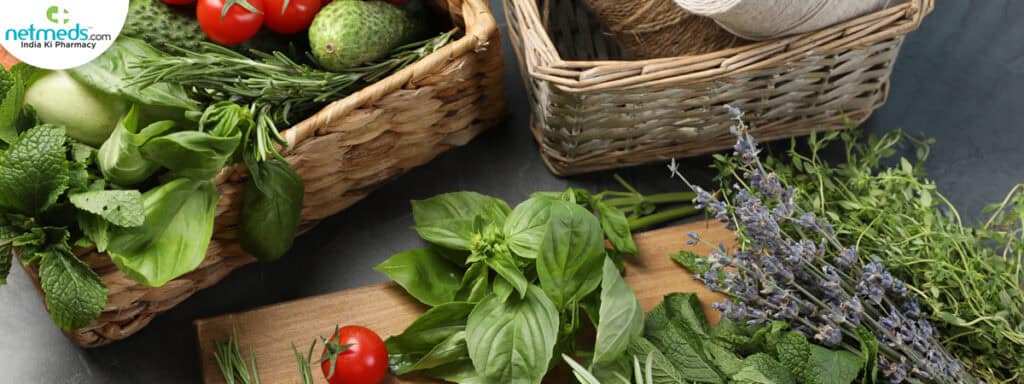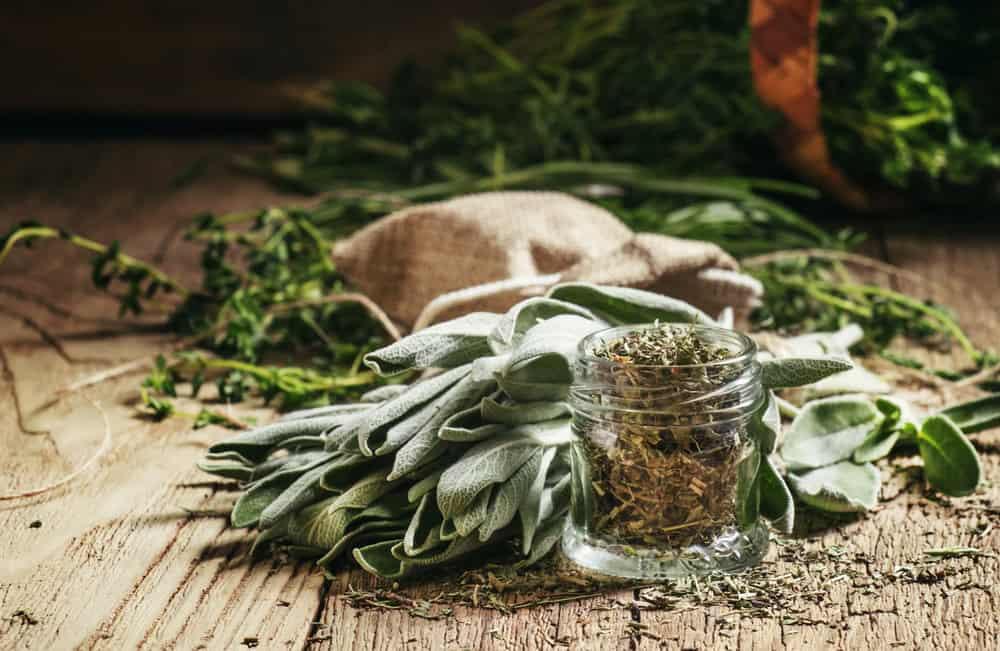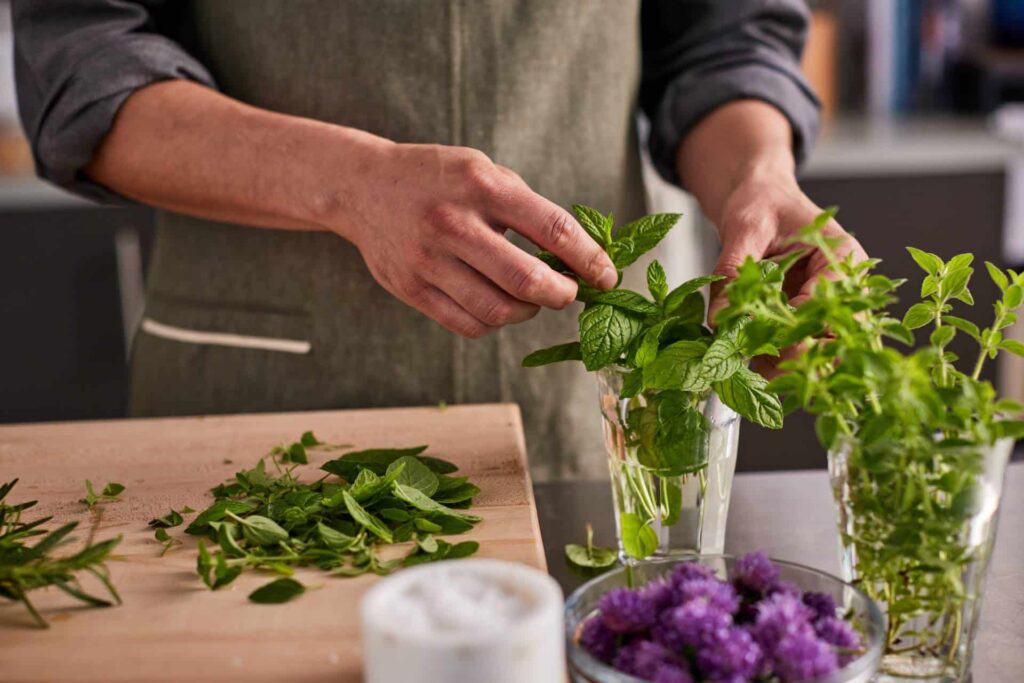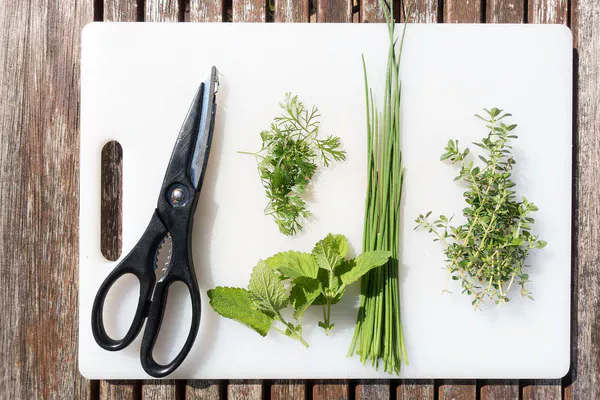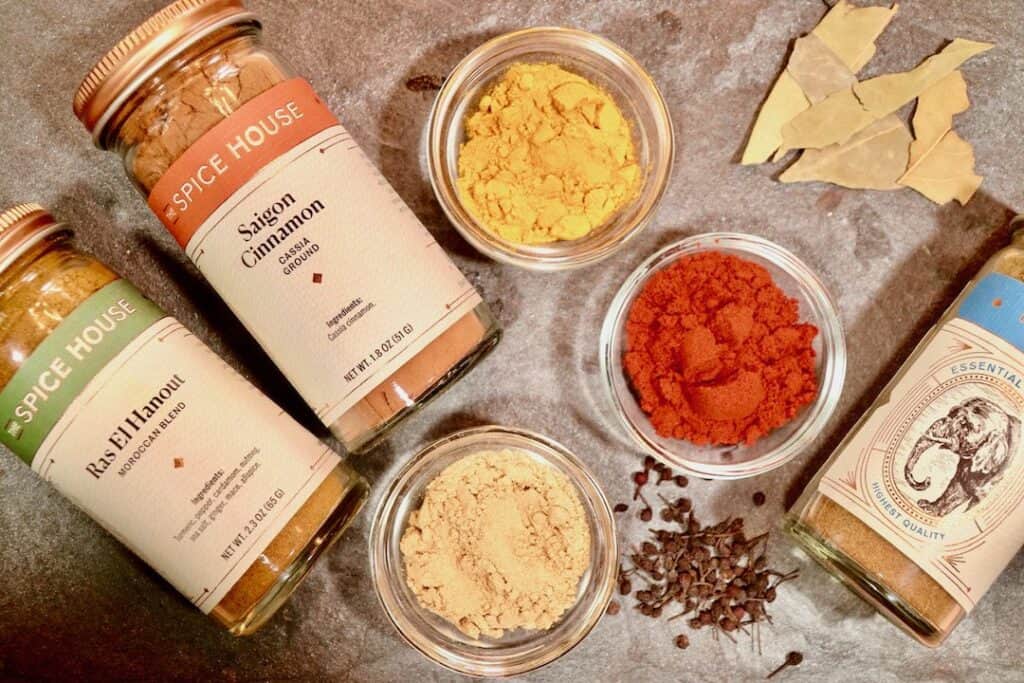SUMMARY: Dry herbs offer a longer shelf life compared to fresh, making them a convenient choice for extended use. Choosing between dried and fresh depends on your need for convenience versus flavor in your cooking.
Are you constantly throwing away wilted herbs, wondering how to extend their shelf life?

- The science behind drying herbs and how it preserves them.
- What makes fresh herbs so vital in cooking but challenging to keep.
- Comparative insights on shelf life and tips for extending it.
- The impact on flavor profile in culinary applications.
Continue reading to discover how to choose wisely between dried and fresh herbs, ensuring your dishes are flavorful and your pantry is optimally stocked.
The Basics of Dried Herbs
Dried herbs have been a cornerstone in kitchens around the world for centuries, offering a convenient, long-lasting way to enrich dishes with a variety of flavors. By removing moisture from the herbs, drying not only extends their shelf life but also concentrates their flavors, making them more potent than their fresh counterparts. This process involves either air drying, dehydrating, or freeze-drying, each method ensuring that herbs retain their essential oils and aroma for extended periods.
The key advantage of dried herbs is their longevity. Properly stored in a cool, dark place, dried herbs can maintain their flavor and potency for up to a year, and sometimes even longer. This is a stark contrast to fresh herbs, which typically last a week or two in the fridge before they start to wilt and lose their vibrant taste.
However, it’s essential to use dried herbs correctly to make the most of their extended shelf life. Because their flavors are more concentrated, a general rule of thumb is to use one-third the amount of dried herb when substituting for fresh. This balance ensures that dishes are flavored appropriately, without overwhelming the palate.
Understanding Fresh Herbs
Fresh herbs are the fragrant leaves of both perennial and annual plants that are used for their flavor, aroma, and visual appearance in culinary dishes. Unlike their dried counterparts, fresh herbs typically boast a brighter, more potent flavor profile, making them a preferred choice in cooking where such characteristics are desired. Fresh herbs, however, have a significantly shorter shelf life and require proper storage to maintain their quality. This often involves refrigeration or placing the stem ends in water to prolong their freshness.
The benefits of using fresh herbs extend beyond their flavor. They can bring a vibrant color and texture to dishes that dried herbs cannot replicate. Moreover, fresh herbs often contain higher levels of essential oils and aromatic compounds that can enhance the overall sensory experience of a meal. While fresh herbs do require more frequent purchasing and careful storage, their ability to elevate the taste and presentation of food is unparalleled.
Longevity and Preservation
When it comes to the shelf life of herbs, the contrast between dried and fresh varieties is substantial. Dried herbs, thanks to their reduced moisture content, boast an extended shelf life, typically ranging from one to three years. This longevity ensures that they retain their flavor and potency over longer periods, making them a convenient and cost-effective choice for many home cooks and professional chefs alike.
On the other hand, fresh herbs present a different story. Their shelf life is significantly shorter, often lasting just a week or two when stored properly in the refrigerator. However, the lifespan of fresh herbs can vary depending on the type of herb and the storage method. For instance, herbs with tender leaves, such as cilantro or basil, may wilt or deteriorate faster than hardier varieties like rosemary or thyme.
To extend the shelf life of dried herbs, it’s crucial to store them in a cool, dark, and dry place. Airtight containers are preferred to keep moisture and other deteriorating factors at bay. Meanwhile, fresh herbs benefit from being loosely wrapped in a damp paper towel and stored in a breathable bag in the crisper drawer of your refrigerator. Alternatively, some fresh herbs can be stored like cut flowers in a jar of water, extending their freshness.
Understanding these preservation techniques can significantly impact the longevity of both dried and fresh herbs, allowing you to enjoy their flavors and benefits for as long as possible.
Culinary Uses and Flavor Profiles
The choice between dried and fresh herbs isn’t just about their shelf life; it also profoundly affects the flavor profile and culinary uses of these aromatic ingredients. Dried herbs, concentrated in flavor due to the evaporation of their moisture content, are powerful and pungent. They are ideally suited for longer cooking processes where they have ample time to rehydrate and infuse the dish with their essence. Stews, soups, and sauces can benefit greatly from the robust flavors of dried herbs.
Fresh herbs, on the other hand, tend to provide a more vibrant, bright, and delicate flavor. They are often used at the end of the cooking process or as a garnish to preserve their freshness and color, adding a splash of brightness to the dish. Fresh herbs shine in salads, dressings, and dishes where the integrity of their flavor is paramount to the overall taste experience.
Understanding the flavor profiles and best culinary uses of dried and fresh herbs can enhance your cooking, allowing you to create more flavorful, balanced, and nuanced dishes. Whether you’re reaching for the dried rosemary to add depth to your roasted meats or the fresh basil to top off your homemade pizza, knowing how to utilize these herbs can make all the difference in your culinary endeavors.
Choosing the Right Herb for Flavor, Shelf Life, and Culinary Convenience
In this exploration of dried versus fresh herbs, the decision largely hinges on the demands of shelf life, culinary application, and flavor preference.
- Dried herbs offer an extended shelf life, making them a practical choice for stocking your pantry with flavors that withstand the test of time.
- Fresh herbs bring a burst of vibrant flavors suited for dishes where nuance and freshness are paramount, albeit with the trade-off of a shorter shelf life.
- The longevity and preservation of both herb types can be optimized through proper storage techniques, ensuring maximum flavor and utility.
- Choosing between dried and fresh herbs ultimately depends on the culinary context, with dried herbs favored for their convenience and longevity, and fresh herbs preferred for their superior flavor and texture.
In summary, whether your choice leans towards the durability and convenience of dried herbs or the fresh and aromatic allure of fresh herbs, understanding their distinct attributes allows for more informed decisions in enhancing your culinary creations.
Extended Shelf Life: Comparing Dried Vs Fresh Herbs FAQs
How do I properly store dried herbs to maximize their shelf life?
To maximize the shelf life of dried herbs, store them in an airtight container in a cool, dark place. This protects them from the degrading effects of heat, light, and moisture. Properly stored, dried herbs can retain flavor and potency for up to one to three years, depending on the herb.
Can fresh herbs be dried at home to extend their shelf life?
Yes, fresh herbs can be dried at home to extend their shelf life. The most common methods include air drying, oven drying, or using a dehydrator. Each method requires proper ventilation and low humidity to effectively dry herbs while preserving their flavors and medicinal properties.
Do dried herbs lose their flavor over time?
Dried herbs do lose their flavor over time as the essential oils, which contribute to their aroma and taste, begin to dissipate. However, if stored properly in airtight containers away from light and heat, they can maintain good flavor for several months to a few years, depending on the herb.
How can I tell if my dried or fresh herbs have gone bad?
Dried herbs that have gone bad may lose their color, aroma, and flavor, becoming dull and tasteless, which indicates it’s time to replace them. For fresh herbs, signs of spoiling include wilting, discoloration, and a slimy texture. Any presence of mold means the herbs should be discarded immediately.

